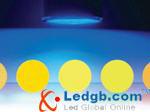LED phosphors typically incorporate rare-earth elements, and manufacturers need to ensure that they have an adequate supply of these critical materials, as TIM WHITAKER reports.

The LED industry uses a wide and growing range of phosphor materials to convert the light emission from LED chips into a different wavelength spectrum. LED makers rely on their supply of phosphor materials as a crucial aspect of the production process. The most common use is the combination of a blue LED chip with one or more phosphors to create a white LED. Many of the phosphors used in LEDs contain rare-earth elements, and the availability of these materials is currently causing some concern, particularly because of new quotas introduced by China.
The 17 rare-earth elements comprise the lanthanide series in the periodic table elements 57 through 71 plus scandium Sc and yttrium Y The most common LED phosphor is yttrium aluminum garnet YAG doped with cerium Ce another rare earth, while TAG phosphor contains terbium Tb Silicate phosphors such as BOSE and nitride phosphors are commonly doped with Ce or europium Eu
This article was published in the February 2011 issue of LEDs Magazine. To read the full version of this article, please visit our magazine page, where you can download FREE electronic PDF versions of all issues of LEDs Magazine. You can also request a print copy of LEDs Magazine available by paid subscription and sign up for our free weekly email newsletter.





